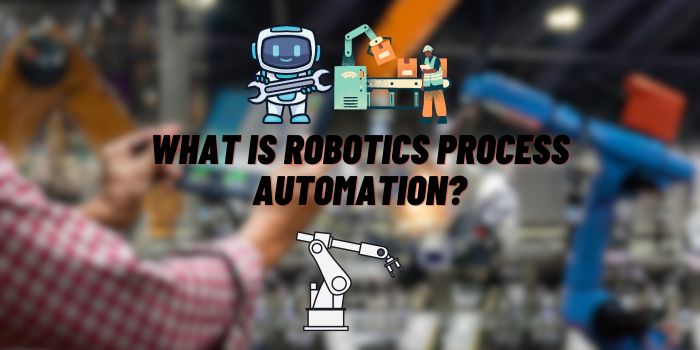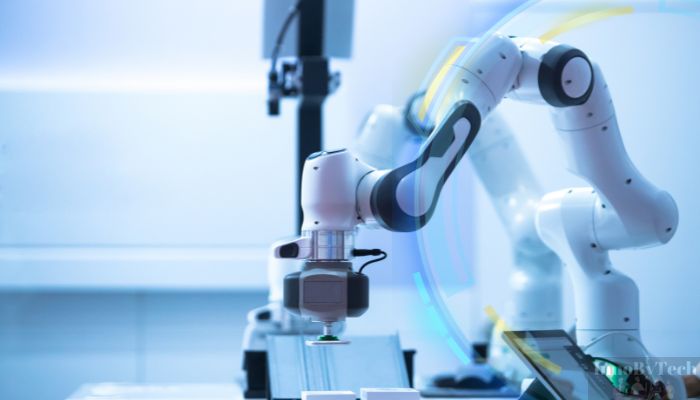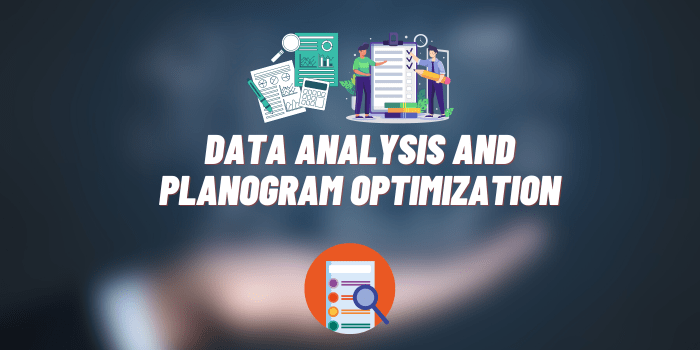What Is Robotics Process Automation?
In today’s rapidly changing world, automation plays a crucial role in making tasks more efficient across various industries. Whether it’s handling everyday household chores or managing intricate industrial operations, automation has helped reduce manual labor and boost productivity significantly.
What is Robotics Process Automation? It’s a technology that allows companies to automate routine, manual tasks with software bots, which perform human-like actions to speed up processes and reduce errors. RPA has become a game-changer in automation, offering businesses a way to streamline operations and increase efficiency in today’s digital landscape.
- Definition of Robotics Process Automation (RPA)
- How Does Robotics Process Automation Work?
- Common Applications of RPA in Industries
- RPA in Manufacturing
- Types of Tasks Suitable for RPA
- Challenges of Implementing Robotics Process Automation
- Difference Between RPA and Traditional Automation
- Future of Robotics Process Automation
- How to Get Started with Robotics Process Automation
Definition of Robotics Process Automation (RPA)

To understand what Robotics Process Automation is, consider it as a form of business process automation that uses software robots to emulate human interactions with digital systems. Unlike traditional automation, RPA doesn’t require complex coding; instead, it works with user interfaces in the same way humans do. It can log into applications, manipulate data, trigger responses, and communicate with other systems.
RPA stands apart from other forms of automation due to its ability to mimic human actions without changing the underlying systems. The main components of RPA include:
- Software Bots: Programs that carry out specific tasks.
- Task Automation: Automating repetitive, rule-based tasks.
- System Integration: Connecting existing systems without disrupting core functionalities.
How Does Robotics Process Automation Work?
How Robotics Process Automation works is by mimicking human actions to interact with digital systems. RPA tools use a combination of user interface automation and artificial intelligence to replicate human behavior. The process generally involves these steps:
- Identifying Repetitive Tasks: Businesses identify processes that involve high-volume, repetitive tasks.
- Developing Bots: Software bots are designed to follow the steps a human would take to perform the tasks.
- Deploying Bots: The bots are deployed in the production environment to start automating the process.
For example, in the case of invoice processing, RPA bots can extract data from invoices, validate it, and input it into an enterprise resource planning (ERP) system, saving hours of manual work. For more on automation and its applications, you can explore Robotics Process Automation by NRwell company.
Key Technologies Behind RPA
RPA is often augmented by several key technologies:
- Machine Learning (ML): Enables bots to adapt and improve from experience.
- Artificial Intelligence (AI): Helps RPA in decision-making and processing unstructured data.
- Screen Scraping: Allows bots to extract data from different applications, making them versatile in integrating with various software.
Benefits of Robotics Process Automation
One of the major benefits of Robotics Process Automation is the ability to improve efficiency by automating repetitive, time-consuming tasks. Let’s take a closer look at some key benefits:
Increased Efficiency and Productivity
RPA can operate 24/7 without fatigue, significantly boosting productivity and reducing cycle times. Bots can complete tasks faster than humans, allowing businesses to redirect human resources to more value-added activities.
Reduction of Human Error
Manual processes are prone to errors, especially when dealing with large volumes of data. RPA eliminates these errors, ensuring tasks are performed consistently and accurately.
Cost Reduction
Automating tasks can reduce operational costs, as bots are cost-effective compared to hiring additional staff. Research shows that RPA implementation can reduce costs by up to 30%.
Improved Compliance
RPA ensures that tasks are performed in a standardized and auditable manner, making it easier for companies to maintain compliance with regulations.
Common Applications of RPA in Industries

Robotics Process Automation is widely used in industries like banking, healthcare, and manufacturing, where repetitive tasks are common.
RPA is used for automating customer service processes, claims processing, and regulatory compliance. It helps in speeding up processes while reducing errors.
In healthcare, RPA is used to manage patient data, automate appointment scheduling, and streamline billing processes, improving overall patient care.
RPA in Manufacturing
RPA helps in managing inventory, tracking supply chains, and maintaining production schedules. This improves efficiency while minimizing manual interventions.
Types of Tasks Suitable for RPA
Tasks suitable for Robotics Process Automation include those that are repetitive and rule-based, such as:
- Data Entry: Automating the input of data into different systems.
- Data Extraction: Extracting data from forms, PDFs, and other documents.
- Report Generation: Generating reports based on pre-set parameters.
These types of processes are ideal candidates for RPA, as they involve repetitive actions that are time-consuming for humans.
Challenges of Implementing Robotics Process Automation
Despite its benefits, Robotics Process Automation faces challenges like high initial costs and complexity in integration. Let’s explore some of these challenges:
The initial investment in RPA tools and implementation can be high, which may deter some companies. However, the long-term ROI often justifies the cost.
Integrating RPA with existing legacy systems can be challenging, especially if those systems lack modern APIs.
Employees may be resistant to adopting RPA due to fear of job loss. Proper change management and communication are essential to overcome this resistance.
Difference Between RPA and Traditional Automation
Unlike traditional automation, Robotics Process Automation can easily integrate with different applications and adapt to changing workflows. Traditional automation often requires custom coding, whereas RPA works at the user interface level, providing more flexibility and scalability.
Future of Robotics Process Automation
The future of Robotics Process Automation looks promising with advancements in AI and machine learning. Let’s explore some of the future trends:
AI and ML will make RPA bots smarter and more autonomous, enabling them to handle more complex tasks with minimal human intervention.
9.2 Future Trends in RPA
- Predictive Analytics: Bots will not only automate but also predict outcomes based on historical data.
- Cognitive Automation: RPA will evolve to include natural language processing (NLP) to understand unstructured data.
These trends indicate that RPA will continue to transform business processes, making them more intelligent and adaptive.
How to Get Started with Robotics Process Automation
To get started with Robotics Process Automation, businesses should follow these steps:
- Assess Processes: Identify processes that are repetitive and rule-based.
- Select an RPA Tool: Choose the right tool based on business requirements and scalability.
- Pilot Testing: Conduct a pilot to ensure that RPA will deliver the expected results before full deployment.
Starting small and scaling up as confidence and expertise grow is the recommended approach to implementing RPA successfully.
Endnotes
In conclusion, Robotics Process Automation is transforming the way businesses operate by automating repetitive tasks, reducing errors, and increasing efficiency. RPA is a powerful tool that not only saves time but also provides a significant competitive advantage. As RPA technology continues to evolve, it will bring even greater opportunities for businesses to innovate and grow.
If you’re considering implementing RPA in your business, now is the time to explore solutions and consult with experts to unlock the full potential of automation.






